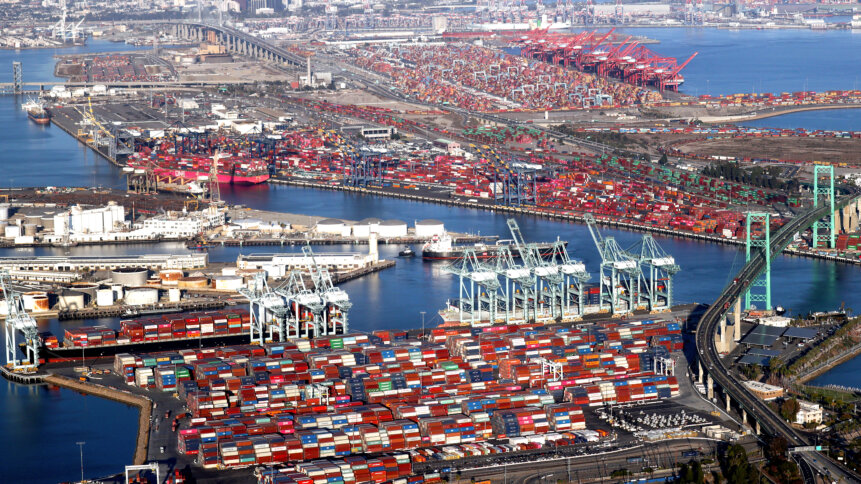Google gives clearer picture of supply chain visibility using digital twin tech

Supply chain visibility continues to be lacking in many companies today, despite the increased usage of technologies to illuminate the process, such as automation or blockchain. Most businesses still rely on multiple applications and old-school methods in keeping track of their inventories, stocks, and so forth.
While some businesses have adopted automated solutions for inventory and stock-keeping, as well as data analysis solutions to understand their customer purchases and demands, most of these platforms are siloed and may not provide sufficient real-time data for making business decisions.
In fact, the retail industry suffered an estimated US1.14-trillion loss due to out-of-stock items in 2020. To make matters worse, the COVID-19 pandemic also disrupted many traditional supply chain monitoring and methods. Businesses need to have updated, real-time insights to be able to predict how they can avoid problems such as running out of raw materials or having an invoice arrive without receiving the goods.
To help businesses maintain better visibility over their supply chain, Google Cloud recently launched Supply Chain Twin. Using digital twin technology, the purpose-built industry solution allows businesses to have a virtual representation of their physical supply chain. The solution orchestrates data from disparate sources to get a more complete view of suppliers, inventories, and other data.
Together with the Supply Chain Pulse module, users will be able to harness a real-time dashboard with advanced analytics, alerts on critical issues like potential disruptions, and collaborations with co-workers in Google Workspace.

(Photo by MARIO TAMA / GETTY IMAGES NORTH AMERICA / Getty Images via AFP)
Digital twin in the supply chain
“End-to-end visibility across the entire supply chain is a top priority for supply chain professionals to optimize planning, real-time decision making, and monitoring,” said Simon Ellis, Program Vice President at IDC.
He added that Google Cloud’s approach to a digital twin of the supply chain spans internal, external, and partner data networks without complex integrations. This approach can help organizations to better plan, monitor, collaborate and respond at scale.
Digital twin technology continues to see increasing adoption in more and more sectors now. While the technology is mostly applied to creating a twin model of machines, architecture, or for visibility and maintenance purposes, COVID-19 has pushed its adoption into newer verticals.
Apart from manufacturing and the oil and gas trades, digital twins are also being applied in the healthcare space, banking, and construction as well. Now, the technology is enabling visibility in the supply chain to give businesses the opportunity to manage their business aided by better data.
With siloed and incomplete data most likely limiting the visibility companies have on their own supply chains, Hans Thalbauer, the MD of Supply Chain & Logistics Solutions at Google Cloud explained that the Supply Chain Twin enables customers to gain deeper insights into their operations, helping them optimize supply chain functions — from sourcing and planning to distribution and logistics.
At the same time, Supply Chain Twin allows companies to bring together data from multiple sources, all while requiring less partner integration time than traditional API-based integration. Google reports that some customers have seen a 95% reduction in analytics processing time, with times for some dropping from 2.5 hours down to just eight minutes.
Among the data types supported in Supply Chain Twin include:
- Enterprise business systems: Better understand operations by integrating information such as locations, products, orders, and inventory from ERPs and other internal systems.
- Supplier and partner systems: Gain a more holistic view across businesses by integrating data from suppliers, such as stock and inventory levels; and from partners, such as material transportation status.
- Public sources: Understand the supply chain in the context of the broader environment by connecting contextual data from public sources, such as weather, risk, or sustainability-related data, including public datasets from Google.
Once customers are up-and-running on Supply Chain Twin, the Supply Chain Pulse module enables enhanced visibility, simulations, and collaboration features. This includes real-time visibility and advanced analytics, alert-driven event management, and collaboration across teams as well as AI-driven optimization and simulation.
While supply chain visibility may provide a clearer picture, businesses also need to ensure they have cybersecurity visibility on their supply chain as well. With more IoT devices being used to automate processes, the supply chain is vulnerable to cyberattacks too. Organizations need to also consider securing their supply chain just as much as they want to monitor it.










